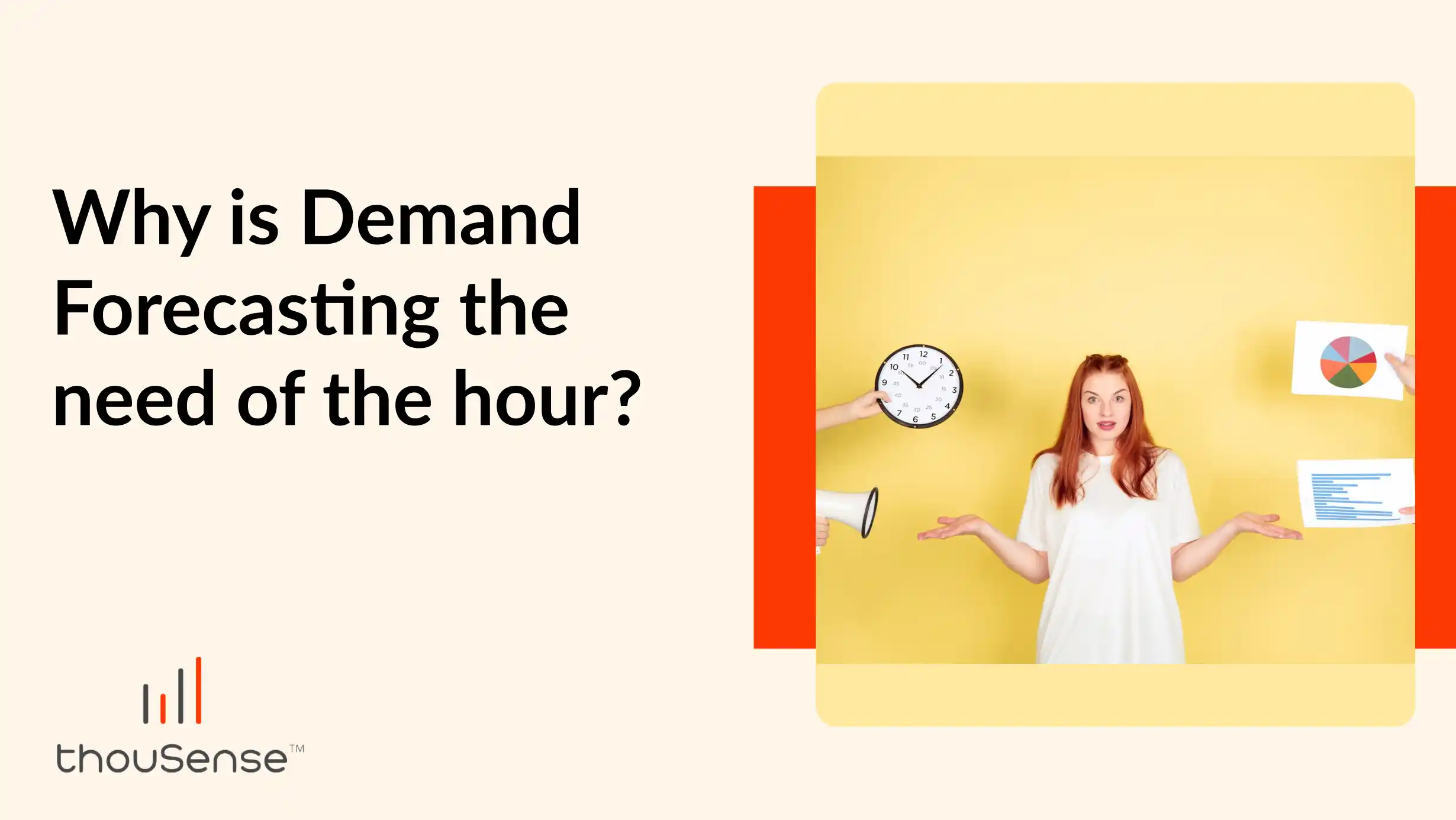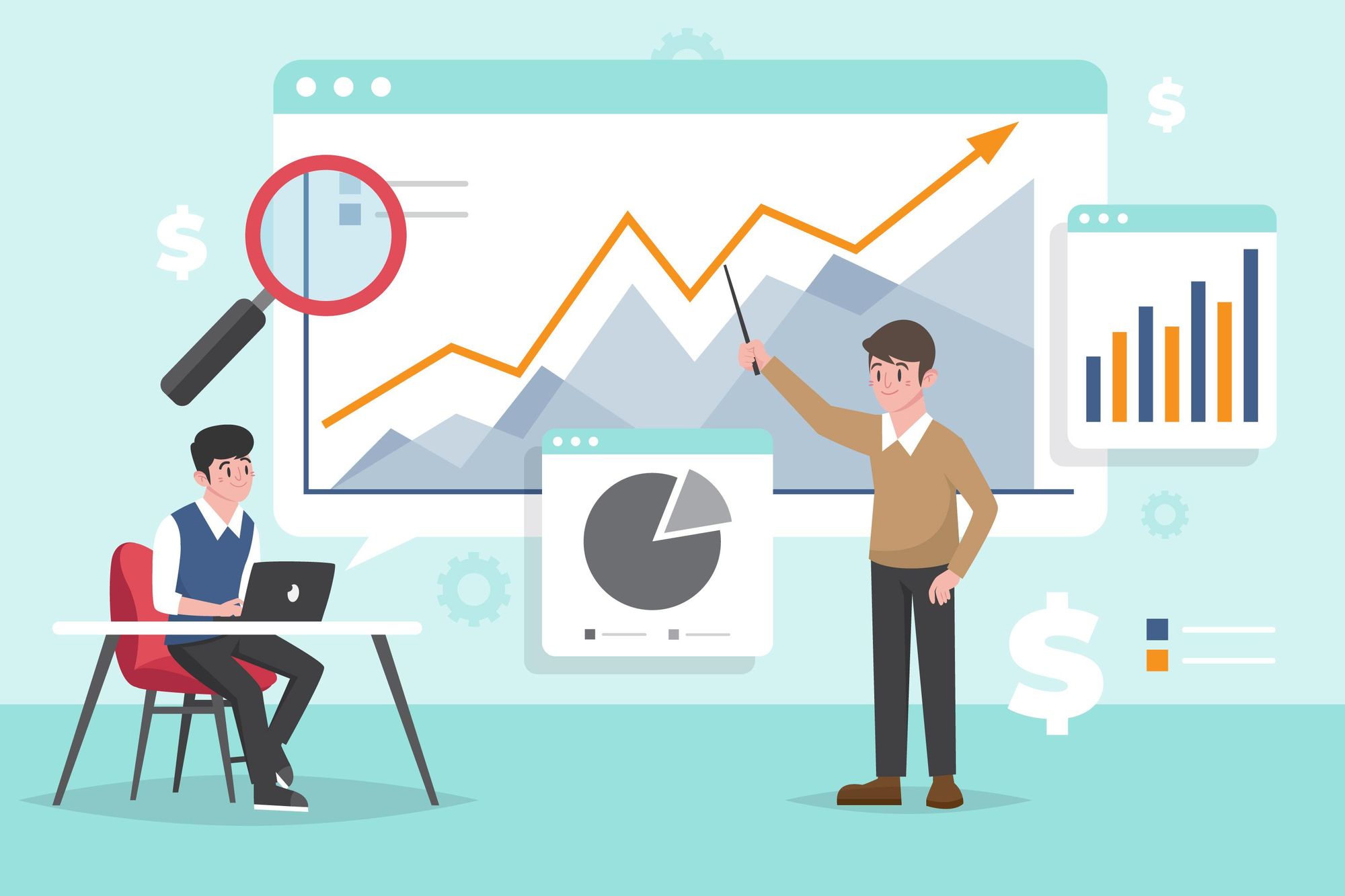Why is Demand Forecasting the need of the hour?

Introduction to Demand Forecasting
Demand forecasting, in a corporate context, is the process through which demand planners attempt to estimate what demand for a certain product or service will be in a particular period, which can be a week, a month, or even a year. Its only goal is to find an accurate answer, so demand forecasting is heavily data-driven. Demand forecasting is a critical part of many businesses. Having said that, it can be a tedious process to get the right predictions at the right time.
Supply chain planning in demand forecasting
A major part of good supply chain practice is inventory management, especially for companies that are handling a large number of products. Due to unanticipated circumstances, firms will constantly need to make on-the-spot modifications to the supply chain. It includes buying more SKUs from the supplier.
Demand plans, on the other hand, make it far simpler to absorb the effect of any unanticipated swings in demand. Predicting the exact amount of inventory is difficult because two basic but significant factors influence inventories, namely supply and demand.
Supply depends on the internal factors or capabilities available to the manufacturers. It can be production capability, relationships with vendors for raw materials, the technology they are using, etc. Demand whereas depends upon external factors including competitors’ capabilities, marketing, consumer behaviour, sales techniques, weather, seasonal changes etc.
There are four broad types of demand forecasting, broadly classified based upon the periods, which include short-term, long-term, seasonal, and economic i.e. macro-level, industry level, and firm level. In short, demand forecasting helps with understocking and overstocking of products. When there is a huge quantity of products, it is very hard to predict demand forecasts for each one of them manually or with traditional forecast tools. Henceforth, the use of artificial intelligence and machine learning-based demand forecasting tools has emerged.
Factors to be considered for demand forecasting
The factors which are considered vital for demand forecasting include choosing appropriate algorithms based on the business strategy, targeting the appropriate data for training, and making predictions. Here, the reliability of the data and usability go hand in hand.
The following are the few areas that get affected by demand forecasting and, in turn, affect the overall business’s top line and bottom line.
Stock Level Maintenance
Businesses suffer immensely from the unprecedented fluctuations in demand, which affect the stock a business keeps at a particular warehouse. If the item in demand is out of stock, it results in a loss of sales and negatively affects customer satisfaction. It also carries the risk of customers switching to competitor brands. Another side of the coin is when the stock is more than the demand and is stuck with the capital, inventory, and other resources that could have been used in other beneficial ventures. Accurate demand forecasting enables businesses to plan their stocks in warehouses accordingly and mitigate losses to some extent.
Labour allocation and scheduling
Understanding the demand patterns and the factors they depend upon affects the amount of labour required for the whole manufacturing process. Access to accurate future demand forecasts improves the allocation of labour. Having the appropriate number of staff on each schedule ensures that appropriate work goals are reached and increases customer satisfaction. During the off-season, training and development of labour can be scheduled to upskill them and hence increase productivity.
Improved Business Strategy
According to the forecast, manufacturers and top-level executives can plan to increase or decrease production. It also provides the opportunity to introspect within the processes and adapt to new technologies and capabilities that can help in production, inventory management, transportation, and distribution. As a result, it helps in better planning and results in a better return on investment. This in turn affects customer satisfaction with the product and the brand.
An Example of Demand Forecasting in Business
An American-based cosmetic start-up company wants to grow rapidly in the upcoming fiscal year. At present, they have around 15,000 orders a month. They have formulated strategies to expand their business and promote it with the help of their marketing team. They have tied up partnerships with retail units and e-commerce stores. Based on the traditional manual estimation method, they are targeting 40,000 orders per month after the campaign. But the question revolves around whether the manual prediction is sufficient or not and how many actual orders they receive per month. Customers would be unhappy if understocking happens, and the company will face a loss if there is overstocking, taking into consideration the shelf life of the products.

This is where an Artificial Intelligence (AI) based demand forecasting tool comes into the picture. It can be used to gain insights into current data and market situations to determine and work on an accurate target. This way, it provides fewer fluctuations in demand and supply chain and helps determine the actual stocking of products in the SKUs and restocking procedure if required for an emergency.
Reasons to adopt AI/ML-based demand forecasting
A general issue faced by demand planners is the amount of data they must process and analyze to reach a certain demand forecast and the accuracy of the insight.
An excellent inventory management system will be accessible, measurable, easily trackable, and helpful in documenting inventory data and activity on time.
An inventory system should be adaptable enough to respond promptly to both major and small changes in demand. Despite having an intelligent inventory management system, determining the stock level at right time at the right cost remain difficult, and that is where inventory demand forecasting fits in.
It enables firms to compute stock levels and common inventory indicators such as whether its merest and supreme stock levels. Amazon adopted this strategy of using AI/ML-based forecasting tools a decade ago. Similarly, many companies are in the queue of adopting this strategy since it reduces the prediction error by 50% and more.
This is where the role of Artificial intelligence and Machine learning comes into play. ThouSense Lite is an AI/ML-based demand forecasting tool that provides a low-touch demand forecasting experience. User must upload important data related to Sales and the hierarchies, and configures their forecast and reporting levels. AI /ML-based algorithms automate the data churning process by considering the other relevant factors like macroeconomic and weather conditions to provide accurate demand forecasts in hours. For more information on AI/ML-based forecasting check out our blog post on the power of AI/ML in demand forecasting. The Business owners and demand planners can use ThouSense Lite to improve Demand forecasting outputs which in turn will improve their service levels which overall improves customer satisfaction and keep the businesses ahead in their game.